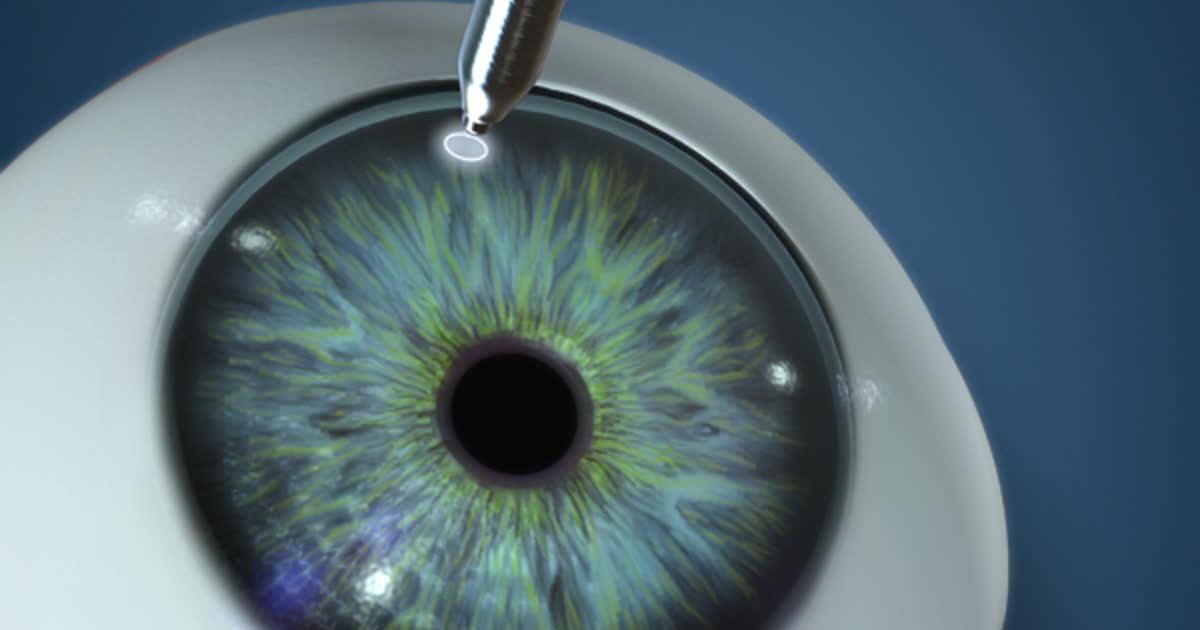Guide To Managing Farsightedness
Farsightedness, also called hyperopia, is a condition of the vision where an individual cannot see nearby objects clearly. Often times, hyperopia runs in families and will be present at birth. Normal eyes are able to focus rays of light on the object the individual is looking at, and the eyes send that image to the brain. Individuals who are farsighted, however, have eyes that are not able to focus light rays properly on the object they are looking at. Common symptoms associated with farsightedness include straining of the eyes, frequent headaches, unable to focus on close objects, and fatigue after looking at a close-up object. A basic eye exam can identify if an individual has hyperopia, and it can determine what degree of treatment is needed.
Get familiar with common options for treating farsightedness now.
Laser-Assisted Subepithelial Keratectomy

Laser-assisted subepithelial keratectomy (LASEK) is a surgical procedure that utilizes a laser to correct the refractive error in the eye of an individual who is farsighted. During the first part of the procedure, the corneal epithelium and the underlying stromal layer are separated from each other. Then, instead of having all of the tissue removed and discarded like in a PRK procedure, the surgeon preserves a very thin flap of epithelium that stays attached to the eye. Afterward, an excimer laser is used to reshape the individual's cornea accordingly. To finish the LASEK procedure, the thin flap of epithelial tissue is placed back on the eye surface, and a special bandage contact lens keeps the epithelium in place until it is healed. LASEK procedures to treat farsightedness are known to be very successful, and they have less adverse effects than LASIK or PRK procedures. However, it will take an individual longer to heal and return to normal activities after a LASEK procedure than it would with a LASIK or PRK procedure. A LASEK procedure is typically an effective and safe alternative for individuals who are not a suitable candidate for LASIK surgery to correct their farsightedness.
Learn more about treating farsightedness now.
Wearing Prescription Lenses

Prescription lenses are a type of lens worn in front of the eyes to correct or enhance vision. These types of lenses are most commonly used to correct refractive errors such as farsightedness, nearsightedness, presbyopia, and astigmatism. Eyeglasses are a type of corrective lens that sits on the face a short distance from the front of the eyes. They are typically made of plastic or metal frames glass or plastic lenses are mounted into. Contact lenses are a type of corrective lens made of extremely thin and breathable material. They adhere and gently sit or float directly on the eye surface. Prescription lenses are tailored to an individual's needs in terms of how much vision correction their eyes require. The choice between using contact lenses or eyeglasses will depend upon the individual's comfort, appearance, risk, convenience, and cost. It is not unusual for a patient who has a refractive error to wear contacts and eyeglasses interchangeably. While corrective eyeglasses provide a layer of protection for the eye contact lenses to do not, contact lenses are said to look and feel more natural on the eye. Wearing prescription lenses is the most popular and cost-effective treatment option available for refractive errors.
Continue reading to discover more ways to treat farsightedness now.
Reduce Eyestrain

For mild cases of farsightedness, a patient may need to simply take steps to reduce eyestrain When the eyes are not strained, they are able to correct themselves up to a certain degree. This is especially applicable if the cause of farsightedness has been exacerbated by eyestrain for a long time. Eyestrain occurs when the eyes become too tired or fatigued to function properly. Staring at a book, computer screen, smartphone, tablet, or driving too long can easily cause eyestrain. When the eyes are engaged in such visual activities, they only blink half as many times as they should. This can make farsightedness worse because it is partly caused by dryness in the eyes. When the eyes do not blink as much as they should, they are not refreshed properly. This results in itching, burning, headaches, irritability, and general eye pain. In addition, the ciliary muscle becomes tense and tightens up during tedious visual activities. This causes the eye to have difficulty with focusing on certain objects, and it can result in the eye sending the brain a blurred or double image (double vision). Allowing the eyes to have a proper amount of rest from focusing on a single object can improve mild farsightedness.
Get the details on more ways to treat farsightedness now.
Photorefractive Keratectomy

Photorefractive keratectomy (PRK) is a corrective refractive surgical procedure that treats conditions such as astigmatism, farsightedness, and nearsightedness. PRK was the first type of vision correction laser eye surgery to come about before LASIK surgery was introduced. Photorefractive keratectomy offers advantages for certain patients over the LASIK procedure. In the first part of the PRK procedure, the entire epithelium or outer layer of the cornea is removed using a surgical instrument, buffing device, or an alcohol solution. That tissue is then discarded. After this, the surgeon uses the same type of excimer laser used in LASEK surgery to reshape the cornea of the eye. The patient's eye is then left alone to build itself a new layer of the epithelial eye surface covering for the next several days. While the chances of contracting an eye infection are greater with photorefractive keratectomy, the entire depth of the underlying stroma can be treated because the surgeon does not have to accommodate a flap. For individuals who have farsightedness and too thin of a cornea for LASIK surgery, PRK is a viable and practical alternative. This procedure is also a helpful option for individuals who have a thinner cornea due to having had LASIK surgery already.
Uncover details on more farsightedness treatment options now.
Conductive Keratoplasty

Conductive keratoplasty (CK) is a refractive surgical eye procedure that does not utilize a laser. Instead of using a laser, this procedure utilizes a hand-held instrument that includes an extremely small probe on the end of it. Conductive keratoplasty is most often used to treat mild cases of farsightedness and is not as permanent as PRK or LASEK. During the CK procedure, the probe instrument administers low-level, RF energy or radio frequency energy to certain spots on the outer part of the cornea. This energy is applied in a circular pattern around the cornea so the corneal connective tissue only shrinks in those areas. This creates a circular band that tightens around the cornea and causes it to steepen. This corrects mild problems with the eye being unable to focus light beams on a nearby object correctly. An advantage conductive keratoplasty has over LASEK and PRK is no tissue is removed off of the cornea during the procedure. This reduces the risk of post-procedural infections of the eye and other adverse complications. However, conductive keratoplasty is only effective for candidates who meet specific requirements that are more limited than those for LASEK and PRK.